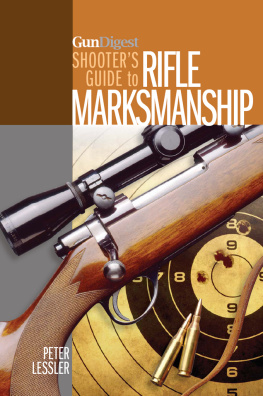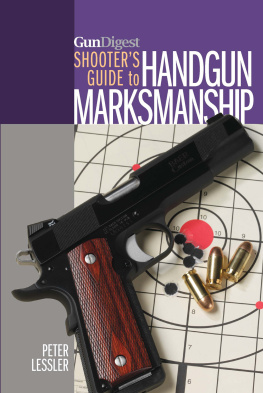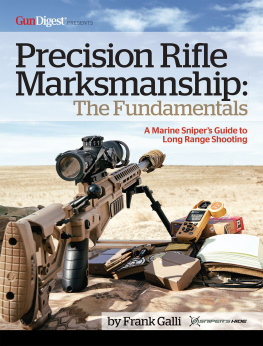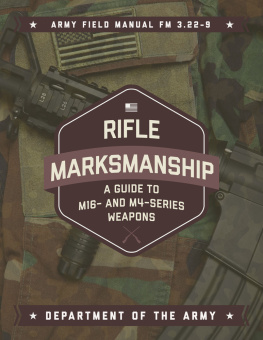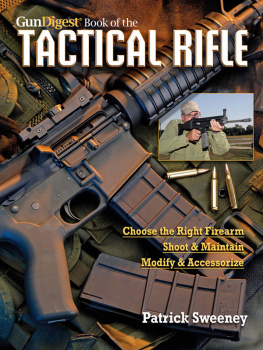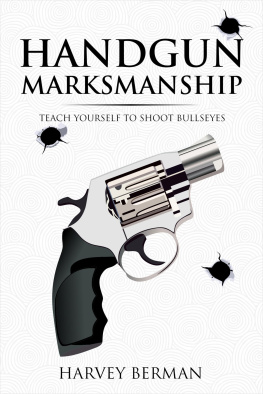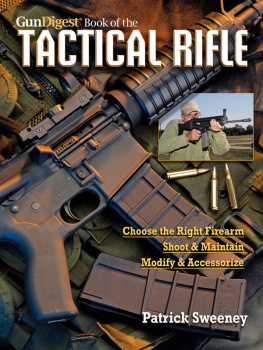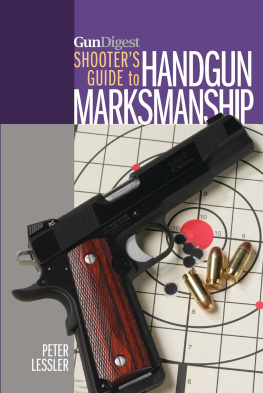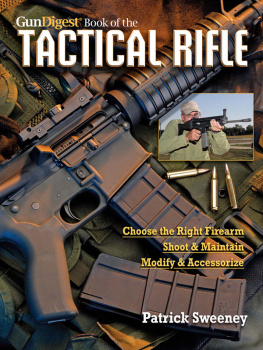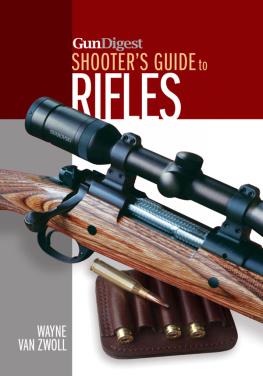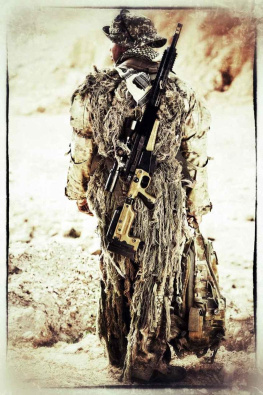GunDigest
SHOOTERS GUIDE to
RIFLE
MARKSMANSHIP
PETER LESSLER
DEDICATION
T o my parents, who didnt bat an eye when I wanted to join the high school rifle team and NRA junior smallbore rifle club; to the late Lt. Col. Jeff Cooper, whose teachings helped make me a better shot and whose writings helped make me a better citizen and man; and to the late Eddie Rhodes, IPSC Grandmaster, three-gun champion, police captain, and outstanding man, who left us far too early, and whose smarts, wit, and big heart are greatly missed by many.
OLYMPEION
An Ode to the Rifle
by Lt. Col. Jeff Cooper
You hold in your hands the bow of Diana,
the spear of Achilles, the hammer of Thor.
Now you command both precision and distance.
To dominant power youve opened the door.
Your rifle embodies the gift of Hephaistos,
the grant of Olympus to hapless mankind.
Your rifles a thing of both power and beauty.
Its proper employment ennobles the mind.
Bare-handed you live at the mercy of numbers,
but numbers can never match riflemens skill.
Your rifle essentially makes you the master;
it creates and maintains humanities will.
Vulcan has given you means to establish
divine domination oer man, beast, and foe.
Your rifles the sorcerous sceptre of power.
Direct it with wisdom and judgement bestow.
~ Copyrighted poem printed with the kind permission of Lindy Cooper Wisdom
INTRODUCTION
Good shooting is good execution of the fundamentals. Great shooting is great execution of the fundamentals.
I heard the coach of the Colorado state junior highpower rifle team say that at a highpower rifle bullseye clinic. Fundamentals are not some basic things you breeze by on your way to something more exciting. Rather, they are the foundation of everything you do when taking every shot. No matter what kind of shooting you do, if your fundamentals are incomplete or poorly performed, your shooting will suffer.
Whether beginning shooter or experienced competitor, you will find plenty of useful information here, since much that will be covered has not made it out into the general shooting population. Let me also state that this book is not about tactics, nor concealed carry, nor close-quarters battle techniques, nor various shooting sports, etc. This book is about marksmanship: how to hit with consistent accuracy, and to do so quickly. It is also not about going from say, expert level to master level though it might help some. It is about making sure that your foundational skills are complete and correct, giving you a solid platform from which to pursue further progress.
The rifle is primarily an offensive arm allowing devastating power to be delivered, with range and precision limited only by the power of the cartridge and skill of the user. With this in mind, the purpose of this book is to teach the fundamental skills of rifle shooting to those who have not been formally trained in or otherwise exposed to the techniques described herein.
These techniques are basic to all types of rifle shooting, but I apply them here with certain types of shooting in mind. The skills and techniques covered are designed for the hunter of large or small game with either centerfire or rimfire rifle, accentuating the use of field positions and taking into consideration the pressure of time, out to reasonable distances (about 300 yards). I will also touch upon ballistics and trajectory, sighting devices, the effects of wind, selection of the proper bullet, and practical accuracy requirements so that a well-rounded understanding of the intended task may be acquired, and errors in practical application avoided.
The use of the rifle in the game field by the average hunter seems to have moved rather in a backwards direction over the last generation or two. Certain techniques have been long forgotten, ignored, or have never made it into general knowledge, especially with the present tendency of so many rifle shooters to either never leave the shooting bench, or to depend entirely on bipods or shooting sticks when they do. It is my intent to bring the full blend of old and new rifle techniques together in one reference work for the aspiring rifle shootist so that these will be less likely to fall through the cracks of time as they have in the past.
The skills and techniques covered here will be useful for almost every type of shooting because they heavily emphasize the basic fundamentals of sight alignment, sight picture, trigger control, loop sling, and position. This is not a specialized tome on either target shooting competition or the use of the rifle in battle, though it borrows heavily from the formers principles of precision shooting and may provide some useful insights for the latter purpose.
These techniques have been gleaned from years of experience in both smallbore and highpower rifle bullseye competition, IPSC/USPSA practical rifle shooting competition, formal raining in hunting rifle use by Col. Jeff Cooper, much discussion with fellow competitors and students, and a select bit of reading. For rifle, they are the classic fundamentals of rifle marksmanship long recognized by position target shooters and the Marine Corps as being what works. I realize that there is more than one way to skin a cat, and some readers may have come up through a different system, but it has been my observation that all the good systems I have yet seen share the same basic fundamentals and the differences are mainly in the small details. If you have come up through an incorrect or incomplete system, or no system at all, and have an incorrect or incomplete understanding of fundamentals, then this book is for you.
I make no claim to having invented anything presented in this book; that credit belongs to the competitors and trainers who have striven and sweated and questioned over many decades. However, I may have my own slant when explaining certain aspects of the content. One of those slants is an inherent conservatism and caution which readers of the opposite tendency may find amusing. All I can say is, we are all victims of our experience, and I have had just enough to make me lean that way. Your mileage may vary. The target and the clock are always the final judges.
While there is no substitute for being trained by a proper coach, my goal here is to present this material in sufficiently clear, complete, and ordered form so that the reader can not only understand and perform these techniques, but also gain a good practice regimen to be able to improve and judge these skills, and be able to self-diagnose any problems that might arise. I want you to learn to handle your firearm safely, efficiently, quickly, and smoothly, and be able to place consistently accurate shots on your target, near or far, with the maximum amount of speed possible for your existing skill level and to be able to continuously improve. Most importantly, I want to help you get your thinking about firearms and shooting oriented in the correct way.
Whether for the use of the rifle for quick and accurate field shooting or formal competition shooting, having the correct mindset and knowledge in your head will both prevent major mistakes and help you perform at your best.
In the interest of safety first, here are the four basic rules of gunhandling safety, per Col. Jeff Cooper:
ALL GUNS ARE ALWAYS LOADED. This does not mean you keep your guns loaded all the time. It means you always treat a gun as though it were loaded EVEN WHEN YOU KNOW IT IS NOT. The reason is that some people seem to think it is okay to handle a gun less safely if they think it is unloaded. The problem with this is that they may be mistaken! I didnt know it was loaded! is the cry heard after an accidental (actually, negligent) discharge, assuming the discharger is still alive. First, know how to check if any gun is loaded or unloaded; second, perform this check every time you handle a gun; third, regardless of the guns condition, ALWAYS TREAT IT AS IF IT IS LOADED ALL THE TIME! This will cover your butt in case you are in error, and ingrain good safety habits.

